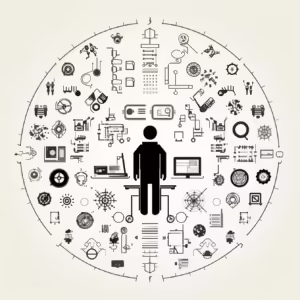Natural Language Processing: Bridging Humans and Machines
Natural Language Processing (NLP) is a fascinating field of artificial intelligence (AI) that deals with the interaction between computers and human language. In recent years, NLP has made tremendous progress, making it an integral part of many technologies and applications. This article provides a comprehensive insight into the world of natural language processing, how it works, applications and challenges.
What is Natural Language Processing?
Natural language processing is an area of AI that aims to enable machines to read, understand and interpret human language. NLP combines computer science, AI and linguistics to enable and improve the interaction between computers and human language.
Core components of natural language processing
- Text Analysis (Text Mining): Extracting useful information and insights from text data.
- Speech recognition: converting spoken language into text.
- Speech generation: Creating human-like text from computer-based data.
- Machine translation: Automatic translation of text or speech from one language to another.
- Sentiment Analysis: Evaluating sentiment or opinion in text data.
Applications of Natural Language Processing
- Digital assistants: Siri, Alexa and Google Assistant use NLP to understand and respond to voice commands.
- Chatbots: Automated systems that process and respond to customer queries in natural language.
- Automated text summaries: Creating summaries from large amounts of text.
- Social media analysis: analyzing opinions and trends on platforms such as Twitter and Facebook.
- Machine translation: Services like Google Translate that translate text and speech between different languages.
Challenges in Natural Language Processing
- Linguistic diversity and complexity: Every language has its own nuances, idioms and dialects.
- Ambiguity and ambiguity: The ambiguity of language makes it difficult for machines to correctly interpret context and meaning.
- Sarcasm and irony: Detecting sarcasm and irony remains a major challenge.
- Cultural and contextual differences: The meaning of words and sentences can vary depending on culture and context.
Future of Natural Language Processing
The future of NLP looks bright, with continued advances in areas such as deep learning and neural networks. The integration of NLP into more and more everyday technologies will further revolutionize the way we interact with machines. Additionally, the development of more accurate and context-aware language processing systems will further blur the boundaries between human and machine communication.
Conclusion
Natural language processing is a crucial part of modern AI that has fundamentally changed the way people interact with machines. From improving customer interactions to facilitating access to information, the possibilities of NLP are diverse and constantly growing. Despite the challenges, NLP remains a dynamic and exciting field of research that has the potential to further push the boundaries of human and machine interaction.





